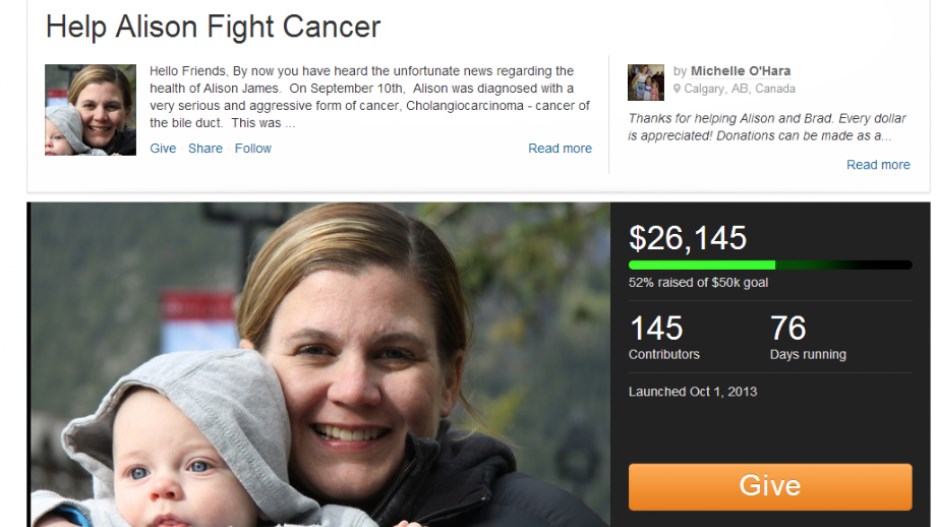Whether they have just been diagnosed with a disease or are dealing with disruptions in their health insurance due to Obamacare, many Americans will go to Healthline.com for information. And if they can’t afford high deductibles, they may resort to crowdfunding.
Now, an agreement between Healthline.com and Vancouver’s FundRazr can allow them to do both from a single website.
Healthline.com has just launched a new crowdfunding service, using FundRazr, that Americans can use to raise money to help cover extraordinary medical expenses.
“Healthline is about guiding patients to better health, and our new crowdfunding feature, powered by FundRazr, helps address the pain many Americans face around often crushing medical expenses,” David Kopp, executive vice-president of Healthline Media, said.
The partnership is especially timely, FundRazr founder Daryl Hatton said, given that many Americans are experiencing a disruption in their health coverage, thanks to the Affordable Care Act.
Many Americans may choose health insurance plans that have high deductibles and low payouts because that’s all they can afford, Hatton said. Crowdfunding can help fill in gaps when Americans get hit with extraordinary helacare expenditures.
“With Obamacare, and the way it’s being structured, more and more people having these minimalist plans are going need more care when they get sick,” Hatton told Business in Vancouver.
“And this is where it will really fill that gap. Crowdfunding is not about paying for the whole thing – it’s about being part of the solution for paying for it.”
Since launching in 2009, FundRazr has raised $40 million – about half of which has been for medical-related campaigns.
Typically, a crowdfunding campaign is started by a friend or family, and social media is used to help spread the word.
One recent example was Jason Jones, a deputy with the Santa Clara Sheriff’s Department, who was diagnosed with leukemia. In one month, friends and family raised $31,000 through FundRazr to help pay for his treatments.
Embedding a crowdfunding service in the Healthline.com portal simplifies things for users, who would otherwise have to shop around for a good crowdfunding service.
“Because they have this critical mass of people who already go there for health information, this is just another aspect of that search,” Hatton said.
“Instead of trying to drag everybody into our site – which is all about crowdfunding – we’re (taking) crowdfunding out to sites that are about health care. This is just an example of crowdfunding as a service.”
One of the biggest concerns over crowdfunding in general is fraud. But as Hatton points out, in the case of raising donations for medical expenses, it usually starts with a core of friends and family, who know the person in need, and this helps verify the campaign’s legitimacy.
“One of the things that we do to help prevent fraud is by not advertising campaigns until they have social proof,” Hatton said.
“Social proof means you have to get donations from your friends of some significance before it’s even available for other people to search or find it.”
The partnership with Healthline.com is just the first of what Hatton predicts will become a common function on many websites, just as PayPal is now a common service on most e-commerce websites.
“I think it’s a fundamental transformation in the way crowdfunding will be done,” Hatton said. “As opposed to being all about bringing our brand out to everybody and being all about us, it’s about helping people find crowdfunding and using it in the places where they already go.”




